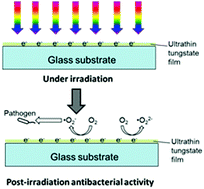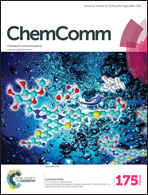Constructing ultrathin film with “memory” photocatalytic activity from monolayered tungstate nanodots†
Abstract
An ultrathin film of monolayered tungstate nanodots was successfully fabricated via a layer-by-layer self-assembly method, which shows a “memory” photocatalytic activity. Photoinduced electrons are quickly stored in the ultrathin film upon irradiation due to the reduction of W6+ to W5+, and discharged to produce superoxides, enabling post-irradiation antibacterial activities.


 Please wait while we load your content...
Please wait while we load your content...